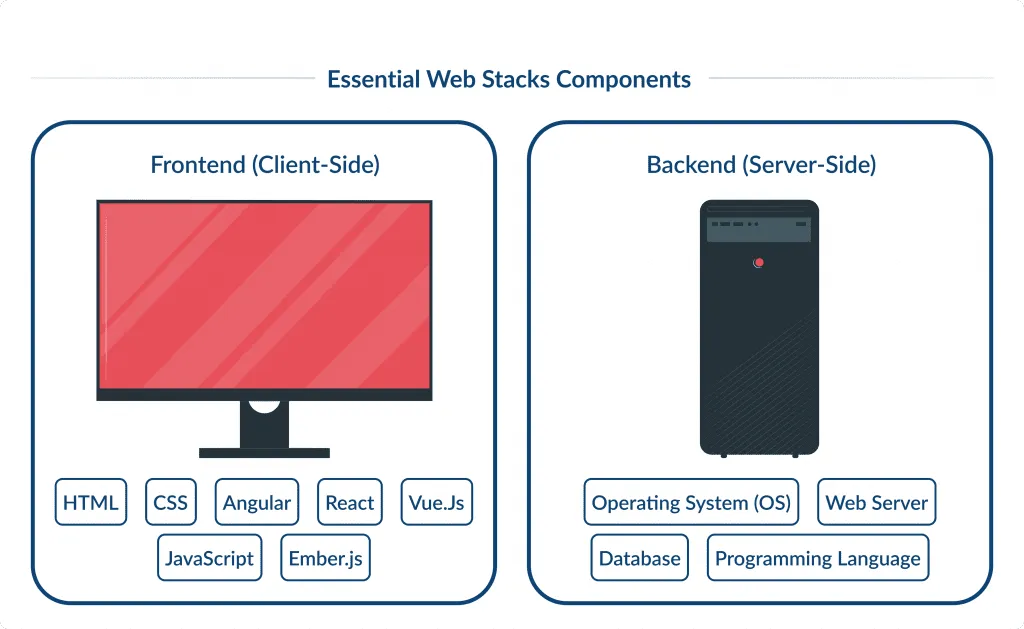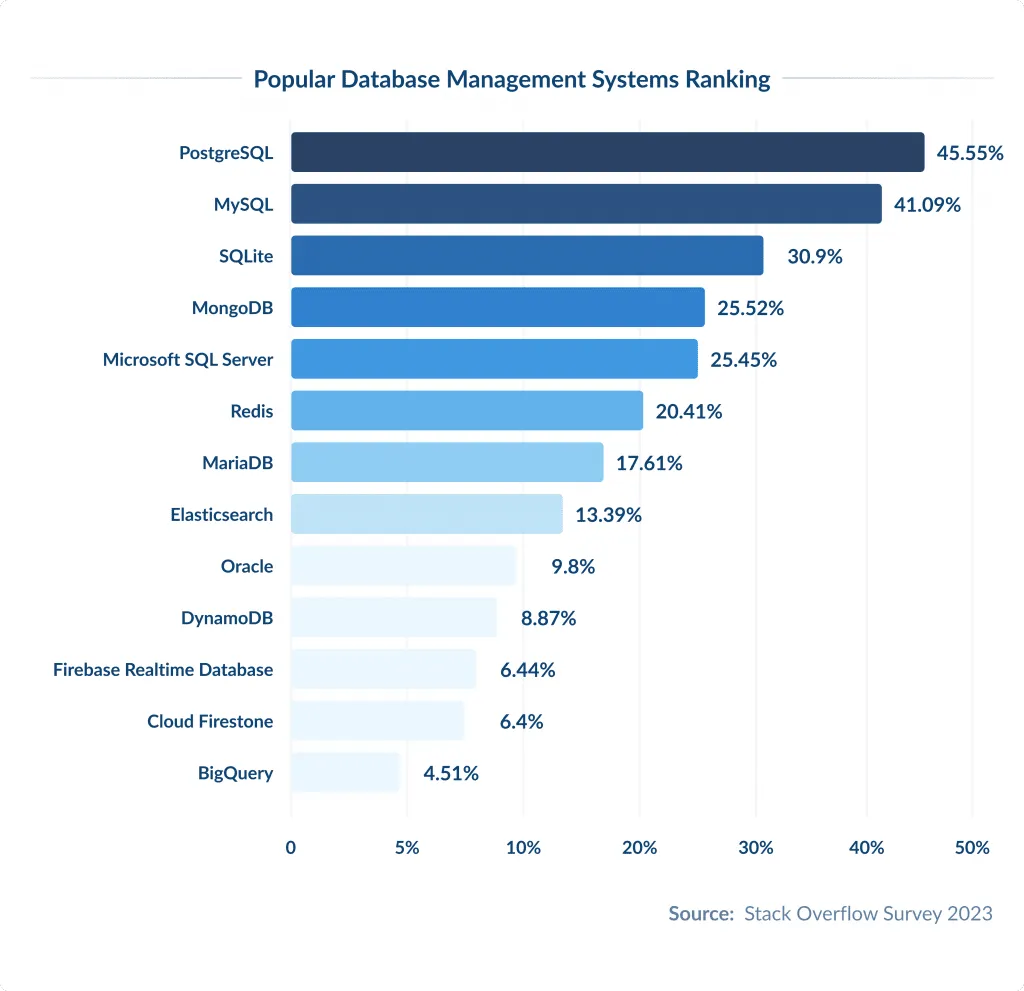Best Web Development Stacks for Fast and Efficient Development in 2024

Building a web application?
What web stack are you using?
Your web dev stack choice can often mean the difference between an acceptable app and a great app.
Web stacks are the set of languages and tools that power your software. And they plau a crucial role in designing a quality web application.
At SpdLoad, we have years of experience in making profitable web applications possible.
We provide that every business should have at least a general understanding of what each technology is and how it works.
So, let’s look at the basics of web app development and discuss some of the most appropriate tools that complement various technical solutions.
These include frameworks, libraries, databases, dev tools, task runners, etc.
This introduction to different web development stacks can help your startup team to know more about tech stack for the product they want.
Importance of Web Stacks in Web Development
Web development stacks are groups (stacks) of tools, languages and technologies used to build all types of applications including apps and websites.
A web stack has two main parts: front end (client-side) and back end (server-side) hence the name stack.
For start-ups and small businesses with limited budget and resources, choosing the right technology stack is part of their software project.
So we’ve covered some of the web stack. The key is to know more about what the web stack is in detail which is explained below.
Essential Web Dev Stacks Components
As we mentioned above, web stacks consist of two components: frontend and backend.
There are many tech stacks for web application development, but not all are created equally.
For startups and small businesses with limited budgets and resources, choosing the right tech stack is key to launching their software applications.
Let’s dive into the components of web stacks.
Frontend (Client-Side)
The frontend tech stack is the part of the application that users interact with directly.
Everything a user can see or interact with on the screen.
The main goal of frontend web development stacks is to create a great user experience with a smooth interface and easy navigation. In short they handle the design, layout and usability of websites or web apps.
Frontend technologies consist of:
HTML (HyperText Markup Language) — this is the web page’s structure. It defines the content and layout.
CSS (Cascading Style Sheets) styles the HTML content. It controls the website’s look and feel, colors, fonts, and layout.
JavaScript makes the web page interactive. It can update content, control multimedia, and animate images.
Frameworks for front-end user interfaces (UIs) are essential to creating modern, user-friendly websites and web applications.
Popular stacks for front-end developers are React, Vue.js, Angular, and Ember.js.

Backend (Server-Side)
The server side of web development is called the backend tech stack and you need dedicated backend developers to cover this aspect of development.
The backend contains all the inner elements of a website or application that are not visible to users’ eyes and that users don’t see.
You can think of it like a power station that delivers electricity to your place — it is unseen but necessary for everything to operate as it should.
The backend consists of:
Operating System (OS)
The OS is the central interface between the hardware and software components of the web application. Popular OSes for web development are Windows, Linux, Unix, and MacOS.
Web Server
Web servers serve web documents and information to clients who request them. Client requests are passed to the web server via HTTP.
Database
We need databases needed to store data for the web project and make it available to the web server as required.
As per a recent Stack Overflow Developer Survey, MySQL, PostgreSQL, Microsoft SQL Server, SQLite, and MongoDB are the most widely used databases.

Programming Language
The programming language, also known as the script interpreter, runs on the client side and within the requesting browser.
Required for dynamic websites and web applications.
PHP is one of the most popular script interpreters; other backend technologies are Java, Ruby, Perl, and Python.
According to the abovementioned Stack Overflow 2023 Survey, these are the most popular programming languages.

APIs (Application Programming Interfaces)
APIs allow different parts of the web stack to talk to each other.
Basically, they serve as a connection between the front-end and back-end components, enabling seamless data exchange.
APIs also allow a website to talk to external services. This can be a payment gateway (like PayPal or Stripe) or a social media platform (like Facebook or Twitter).
With API, your website can perform tasks like processing payments or integrating social media features, so it is unnecessary to build them from scratch.
There are a lot of services we use daily that are built on top of multiple connected APIs. If one API fails, the whole service can break. That is why API testing is a crucial part of web development.
Popular Web Development Stacks
With a full-stack web framework, you can handle both the front end and back end of the web development process.
Some of the most popular frameworks today are full-stack technologies.
Let’s take a look at a few of them below.
MERN
MERN stands for MongoDB, Express.js, React and Node.js.
MERN is used to build dynamic web apps development.
Here’s a quick intro to each component.
MongoDB is a NoSQL database that stores data.
Express.js is a web application framework for Node.js that simplifies server side logic.
React is a front-end library for building interactive user interfaces.
Node.js allows you to run JavaScript on the server side.
Pros
- Single Language: Uses JavaScript for both frontend and backend, makes development easier.
- Scalability: MongoDB is highly scalable and good for growing applications.
- Community Support: This big community has plenty of resources for learning and troubleshooting.
Cons
- Complex Setup: Initial setup and configuration can be complex.
- Learning Curve: Requires knowledge of multiple frameworks and libraries.
